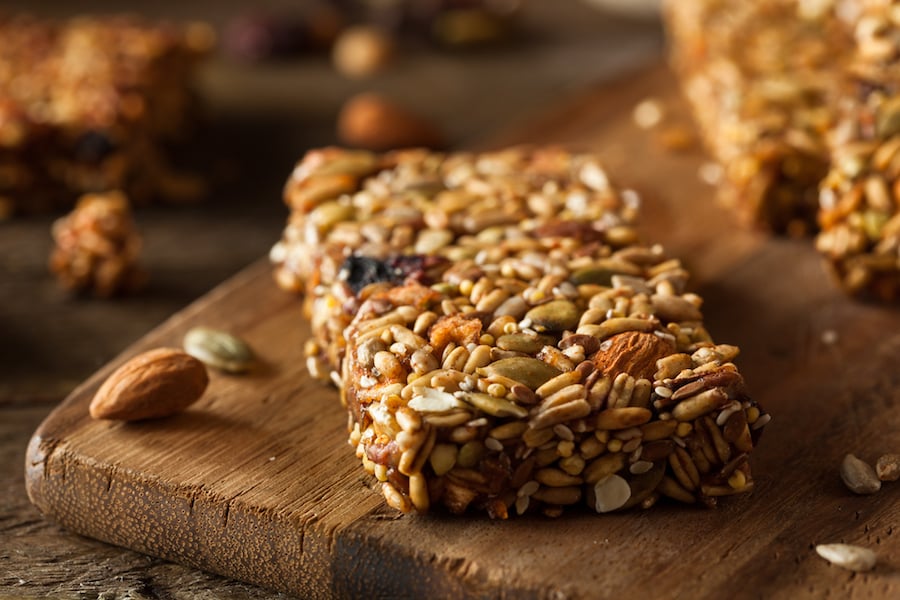 Global protein bar market growth has been healthy for years, in more ways than one. Not only have sales of high-protein snacks remained strong, the consumers who indulge in them may be growing stronger, too, due to their inherent nutritional value.
Global protein bar market growth has been healthy for years, in more ways than one. Not only have sales of high-protein snacks remained strong, the consumers who indulge in them may be growing stronger, too, due to their inherent nutritional value.
But after double digit growth for many years, the market for nutritional/intrinsic health value bars declined 1.5% last summer, and granola bars declined 4.8%. Not all snack categories saw a dip, however. Sales of the cereal/snack/breakfast bar category registered an increase of 7%.
Experts suggest that all-natural ingredients may help spark lagging categories and boost sales; in particular, protein. However, recent research indicates that certain ingredients that have been touted by food manufacturers as being preferred by consumers may not actually be as appealing as they think.
In short, the types of protein used in nutritional snacks and bars may be in question.
Preferred Protein Sources in Protein Bars
Are consumers concerned about the type of protein in their protein bars? Without a doubt, some are, but not to the degree that many marketers would have you believe. About three out of four consumers want protein in their snacks. But what type of protein?
A little less than 30% of consumers reported that the protein bars they consume contain whey protein. Perhaps more significant is that about one in three indicated that they weren’t aware of what type of protein was used.
What does this mean for protein bar manufacturers? Despite the barrage of marketing messages promoting plant-based proteins, about two out of three consumers either prefer whey protein or don’t pay attention.
It begs the question of whether investing in alternative protein ingredients really pays off for food manufacturers, especially when those ingredients may compromise flavors and profit margins.
Whey Protein Offers Better Flavor Profiles
The type of whey used in many nutritional snacks is whey protein concentrate. For a crunchy characteristic in snack bars and cereals, whey protein crisps are the protein of choice.
When comparing whey protein and plant-based proteins, it’s well-regarded that dairy proteins are a more complete protein with all the essential amino acids that health conscious consumers need and want. Likewise, they have cleaner flavor profiles. This allows fruity, sweet or savory flavor combinations to shine through without the need for masking agents that attempt to cover up unpleasant earthy notes of plant-based proteins. Of interest to many is the superior digestibility of whey protein, especially important for those who are concerned about gut health.
There is one plant-based protein that maintains its pure flavors without alterations and is highly sought after by consumers: nuts. While walnuts, almonds, pecans and others are increasingly finding their way into cereals, snacks and bars, their addition adds costs. Pairing nuts with whey protein in formulations helps to boost nutrition and consumer appeal.
While flavor is a deal breaker for most, so is the price of protein bars and meal replacement bars. With some plant-based protein bars needing to mask off flavors and costing twice as much as their traditional whey protein counterparts, it’s understandable why so many consumers stick with whey protein.
How to Evaluate Whey Protein Quality
What’s often not talked about, however, is the difference between commodity whey protein used in many inferior products and the whey protein ingredients used in leading protein bars. Some food manufacturers (and their customers) have been disappointed with the ingredient solutions they’ve tried when attempting to boost nutritional values in their products.
Simply put, not all whey protein ingredients are created equal. When considering a whey protein ingredient supplier, be sure to get answers to the following questions:
- How are your whey protein ingredients made?
- Is it all natural and will it contribute to clean labels?
- Are there any chemical modifications?
- How does it compare nutritionally to plant-based proteins?
- How wide of a pH range is it suitable for?
- How easily will it incorporate into existing food systems?
- Is it ethically sourced?
- Is it made in the United States?
At Grande Custom Ingredients Group, we’re happy to answer these and other questions, and provide samples specific to your unique nutrition bar application to help you stand out in a competitive landscape. So, reach out to one of our food scientists today to assess your needs.




